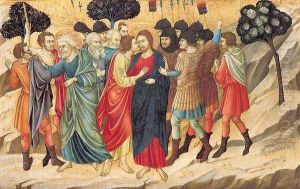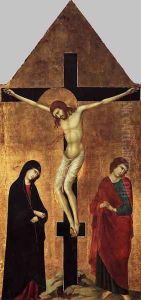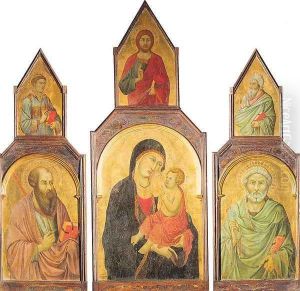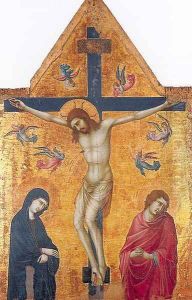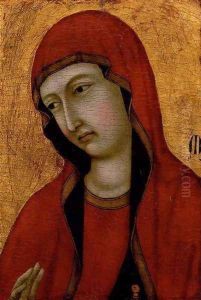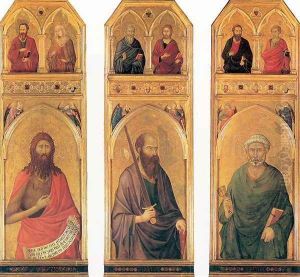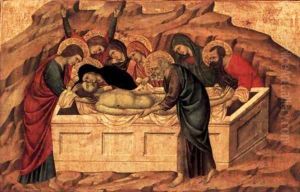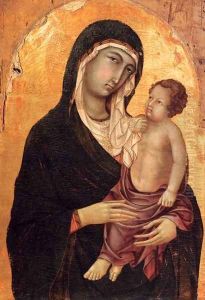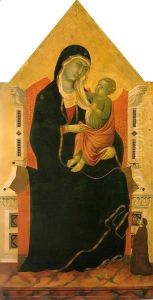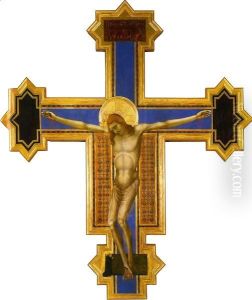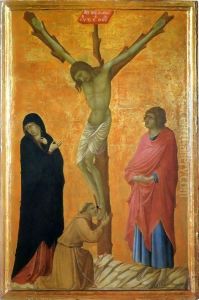Ugolino Di Nerio (Da Siena) Paintings
Ugolino di Nerio was an Italian painter active during the late 13th and early 14th centuries. He is believed to have been born around 1280 in Siena, Italy, which was a significant center of art during the medieval period. Ugolino's style is deeply rooted in the Byzantine tradition, which was typical for the period, yet it also shows the beginnings of the stylistic changes that would lead into the Renaissance. Unfortunately, documentation about his life is scarce, and much of what is known about him is derived from his surviving works.
Ugolino was likely a pupil or follower of Duccio di Buoninsegna, one of the most influential Sienese painters of the time. This influence is evident in the narrative quality of his paintings and the delicate attention to detail. Ugolino's works are characterized by their elegance, clarity, and the use of bright color palettes, as well as gold leaf, which was commonly used to create a divine light in religious paintings.
Among his most notable works is the altarpiece for the church of Santa Croce in Florence, which was commissioned in 1324. This piece, known as the Santa Croce Altarpiece, is considered one of the masterpieces of Gothic art in Italy. The central panel depicts the Madonna and Child, and it is surrounded by scenes from the life of Christ. The altarpiece showcases Ugolino's ability to convey complex religious narratives with grace and emotion.
Ugolino's exact date of death is not known, but it is generally believed that he died around 1349, possibly a victim of the Black Death that ravaged Europe at the time. His works had a lasting impact on the development of Sienese painting, and he is remembered as an important precursor to the changes that would fully emerge during the Renaissance. Ugolino di Nerio's contribution to the history of art lies in his ability to blend the Byzantine style with emerging elements of naturalism and expressiveness, setting the stage for later developments in Italian painting.
